It wasn’t until 1691 that Spanish explorers first met the Payaya Indians of the San Antonio River Valley. It was June 13, the feast day of Saint Anthony, and so they named the area San Antonio. In 1716, to prevent French expansion and illegal trading with the Payaya, the Misión de San Antonio de Valero was built or what is called today, the Alamo. The king of Spain ordered the Canary Islands to send families to populate the area.
I honestly didn’t know much about San Antonio except for the Alamo (which I knew very little of the actual history) and maybe two movies that featured it, Peewee’s Big Adventure, and the 80’s classic Cloak and Dagger that featured the riverwalk and scenes from the town. What I found was a city of over 1.5 million people with a vibrant food scene, a unique and fabulous downtown, and an independent spirit. Definitely worth a visit.
The Alamo
Most people know the Alamo from the battle of the Alamo of 1836 (“Remember the Alamo!”). But it was around for over a hundred years before that as a mission, the first mission and founding congregation of the city of San Antonio. I always imagined it off somewhere in the wilds but it’s situated directly in the middle of town surrounded by tall buildings and hotels. By 1836 it had been rebuilt more than once and was missing a roof.
A brief background: Hoping to increase population in Mexican Texas, the government offered low land prices for settlers which drew a large population of Americans to the region. Mexico declared independence from Spain in 1810 following the US and French revolutions. After a conservative takeover in 1835, a new constitution was written centralizing power instead of a federated state model like in the US, used in the previous 1824 constitution. This included reducing arms in areas which previously enjoyed a larger independence, like San Antonio. It would also meant enforcing immigration laws and the federal ban on slave ownership. This sparked a rebellion amongst the American settlers who took over the makeshift fort that had been made out of the Alamo Mission and expelled the Mexican army. Sam Houston ordered James Bowie (creator of the Bowie knife) to destroy the mission and remove the arms but upon arrival realized the defensive value of the region and chose to remain, later joined by Davie Crocket. The Mexican government had passed an order to treat rebels in Texas as pirates and take no prisoners of war. When the Mexican army returned in 1836 to retake the mission the small army there was overtaken in 11 days and all inside killed. This event inspired Mexican Texas to declare their own independence and eventually expelled the Mexican troops to reach an armistice.
The Alamo does not have a basement.

Live oak over a well in an outside courtyard. The tree was transplanted here in 1921 at the age of 40.


Bliss
Found this place online near our hotel. When Katy researched what food to try in Austin two stood out, the first puffy tacos, and the second quail. If you know anything about me you should know that I love quail and I was perplexed but happy to learn this. Bliss seemed to be the highest rated restaurant serving quail. A romantic outdoor patio under massive palm trees and soft lighting. Upscale new American menu with an eclectic flavor. We both chose the 3 course prix fixe at $55 (some supplements).

Sliders: Chicken fried oyster sliders, spinach, applewood bacon, buttermilk biscuit, brown butter hollandaise
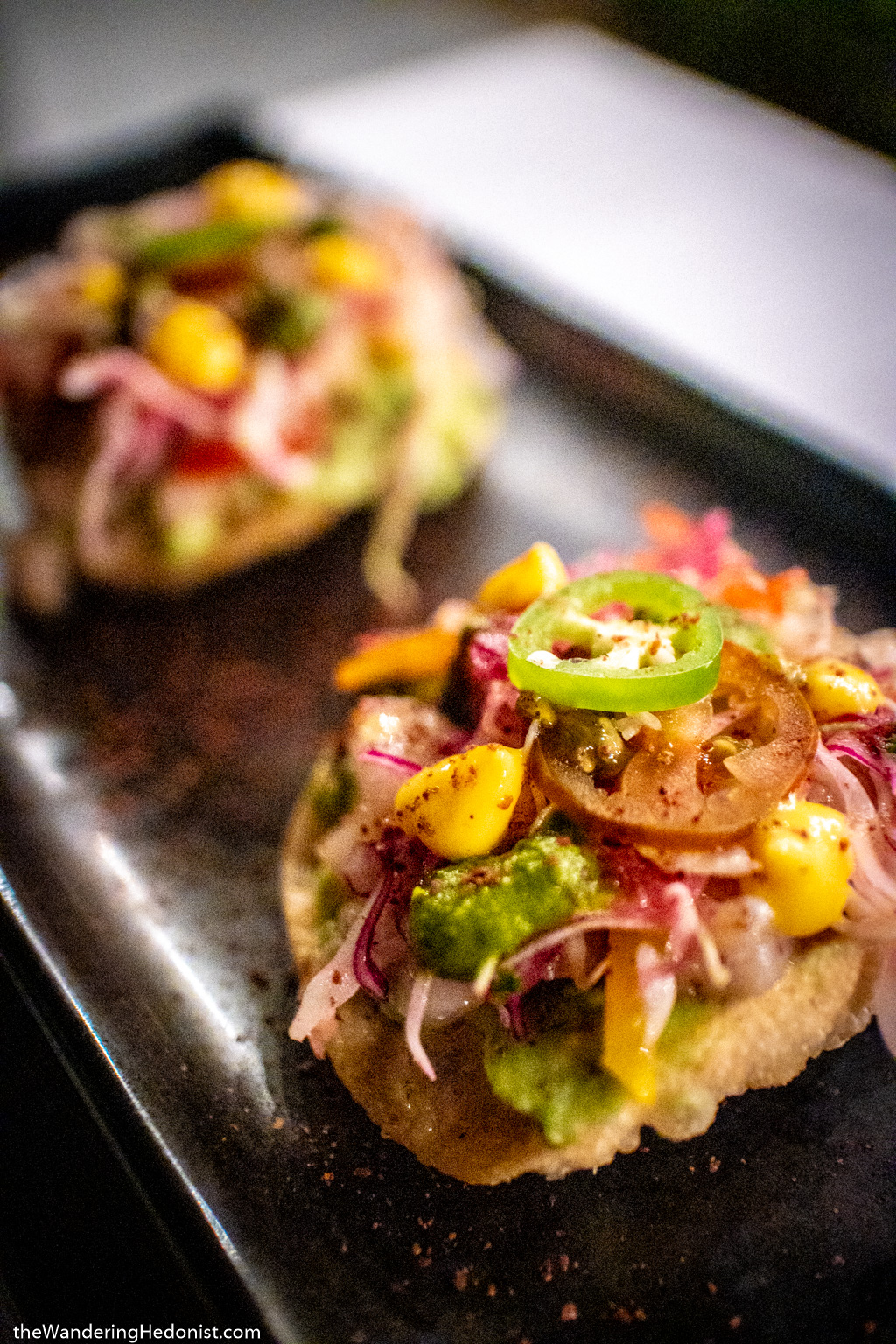
Hamachi Sashimi Tostadas: Roasted jalapeno avocado, ponzu, ginger slaw, aji amarillo yuzu vinaigrette, cilantro salsa verde
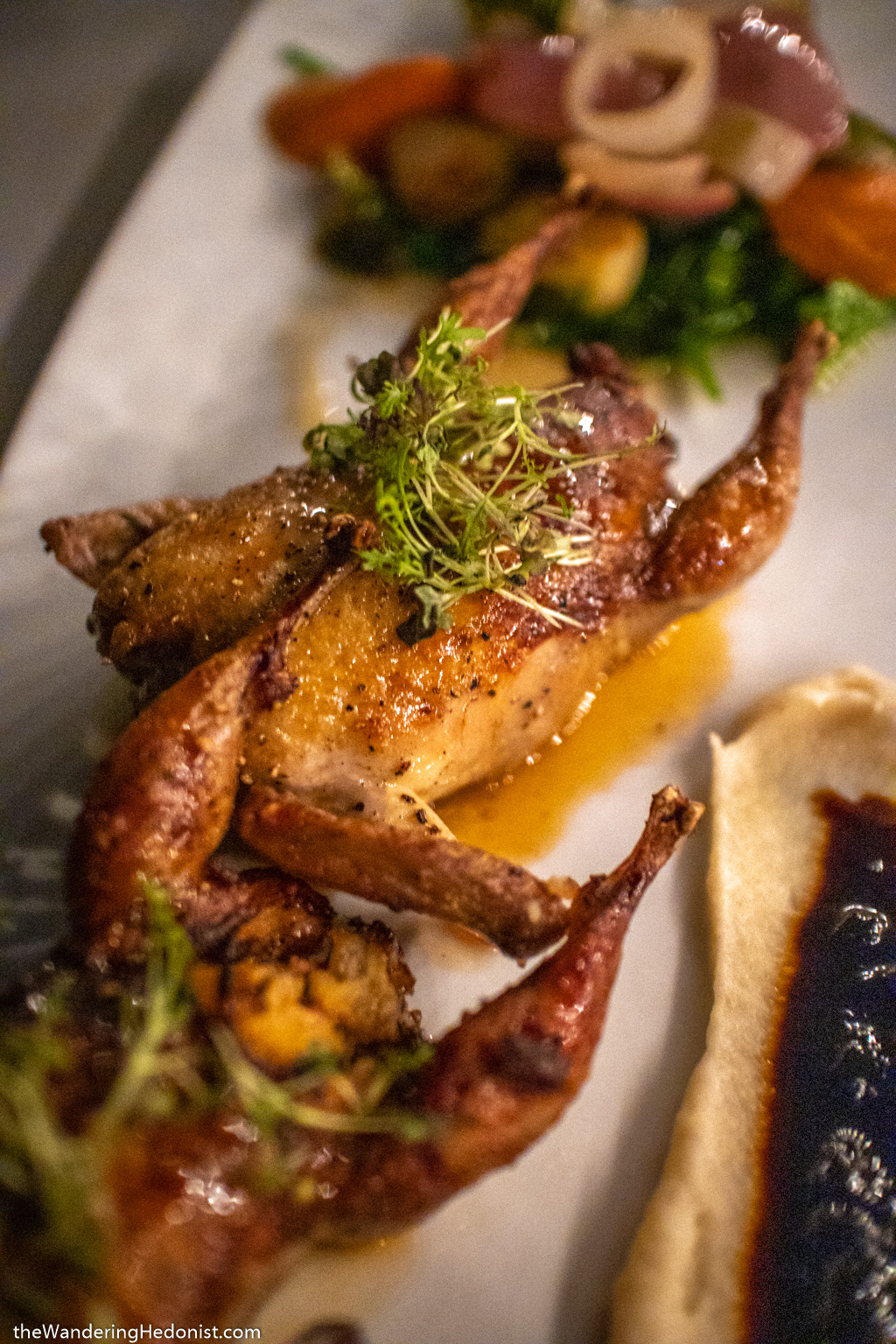
Lockhart Quail: Roasted quail stuffed with dirty rice, celery root puree, caramelized onion & apple compote, braised greens, roasted vegetables, black pepper cider sauce
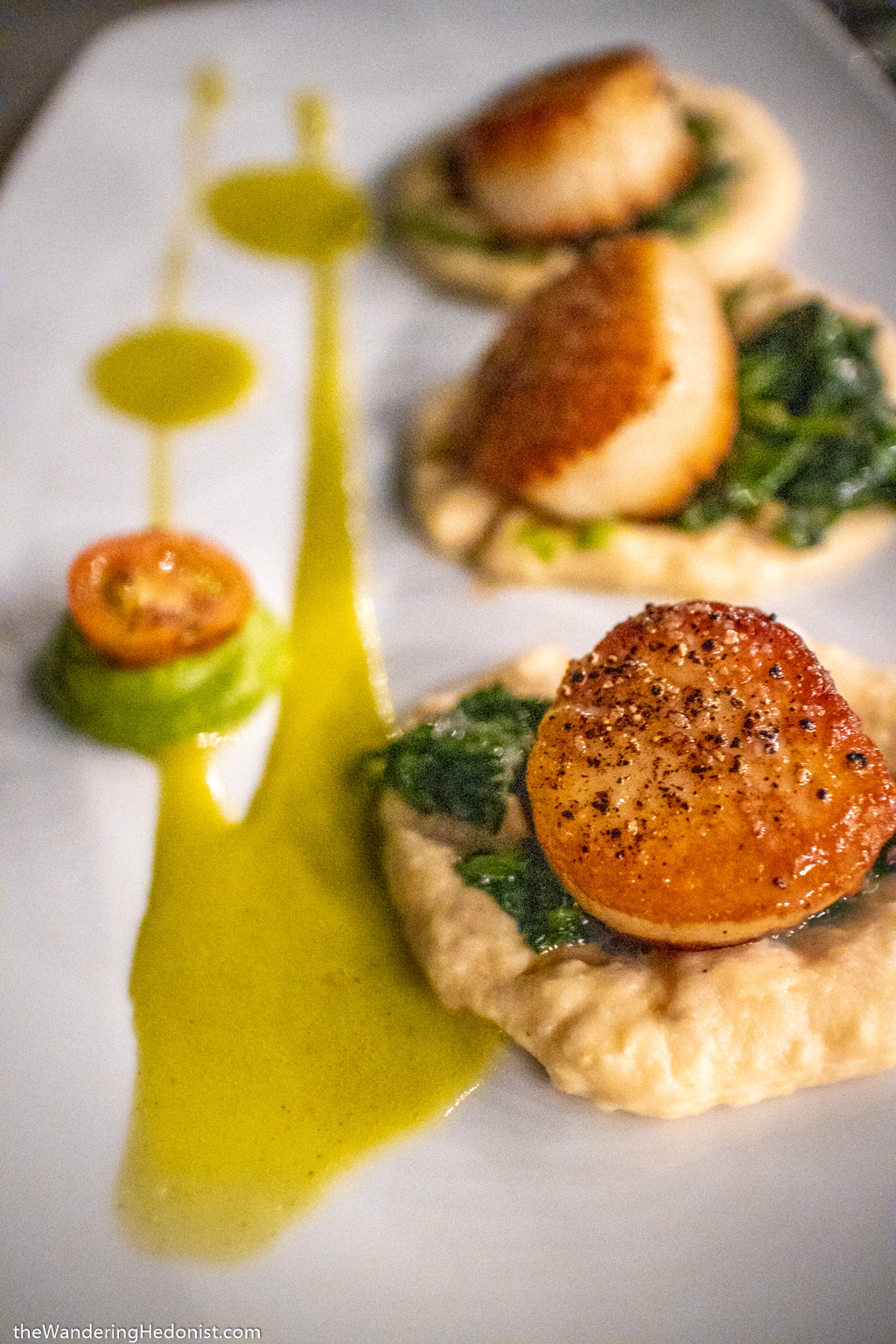
George’s Bank Sea Scallops: Seared sea scallops, pepper-jack cheddar Anson Mills grits, sautéed spinach, avocado mousse, charred jalapeno cilantro beurre blanc
Puffy tacos
So puffy tacos are a thing here. A flour shell is deep fried in a way that creates crispy bubbles all over the shell. Created by Henry Lopez in 1978 when he opened Henry’s Puffy Tacos in San Antonio and is still open today. This taco style can now be found throughout the city. The main location was a bit too far out of downtown so we had some delivered. In 1989 Henry’s created the unofficial mascot of the San Antonio Missions, Henry the Puffy Taco, who has become a town icon.
San Antonio Missions National Historical Park
Five missions were originally built in San Antonio, the Alamo is the first but the remaining four have been collected in a National Historic Park. We ran out of time to see all four of them but we did get to see the main Mission San Jose attached to the park headquarters.
Riverwalk
Maybe the best feature of San Antonio is the riverwalk downtown. After a major flood in 1921, several plans on how to control the water emerged. The eventual victor was a square canal in the heart of down town with elaborate landscaping and bridges. It has an almost Venetian feel to it. Cool and shaded with lots of seating areas and artwork and lights in the trees. It’s downright magical. I really loved it. Worth a visit if for only this.
Walking around town
The city itself has much charm of its own. An interesting mix of modern glass skyscrapers and ancient Spanish mission style buildings. There’s a historical village right off the river walk and several market areas. Lots of electric scooters to easily navigate the flat roads built on a grid. We particularly liked an old bottling district (The Pearl District) renovated into a public space with loads of great restaurants and bars. Many of the city’s best restaurants and stalls can be found there.
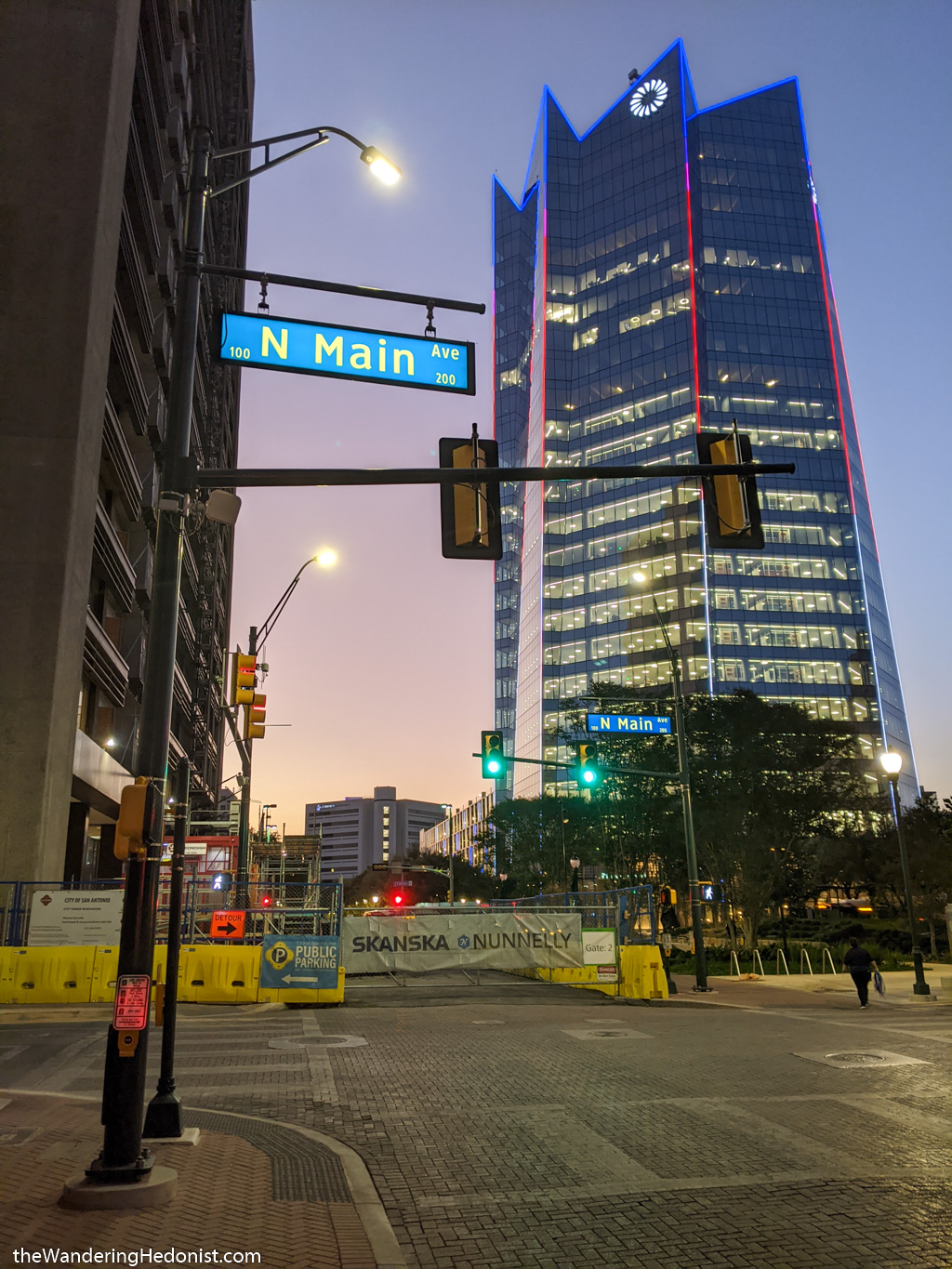


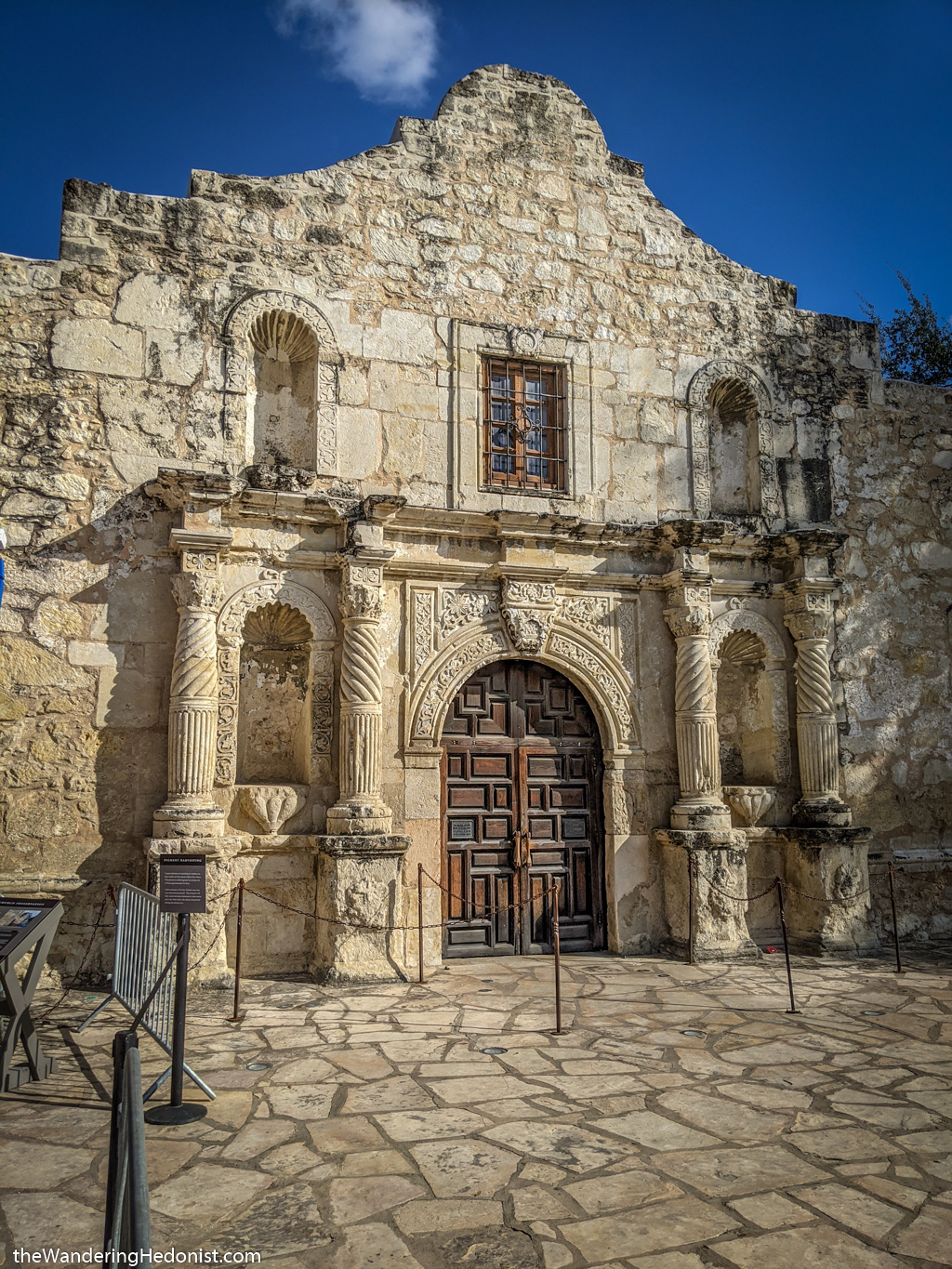
























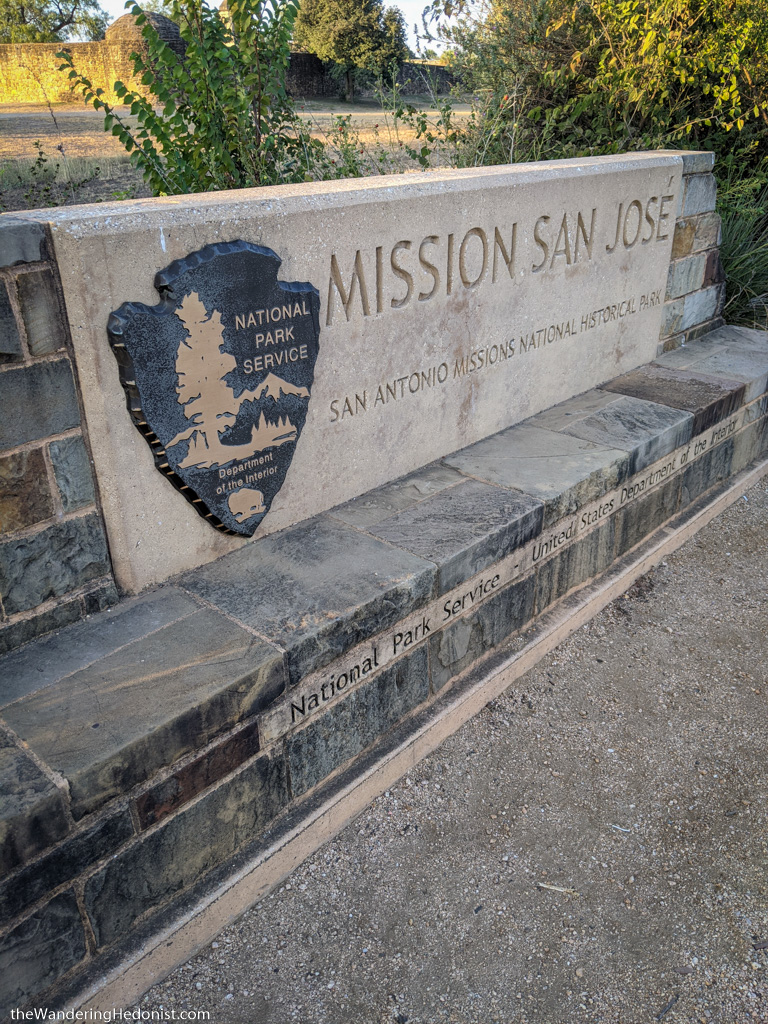
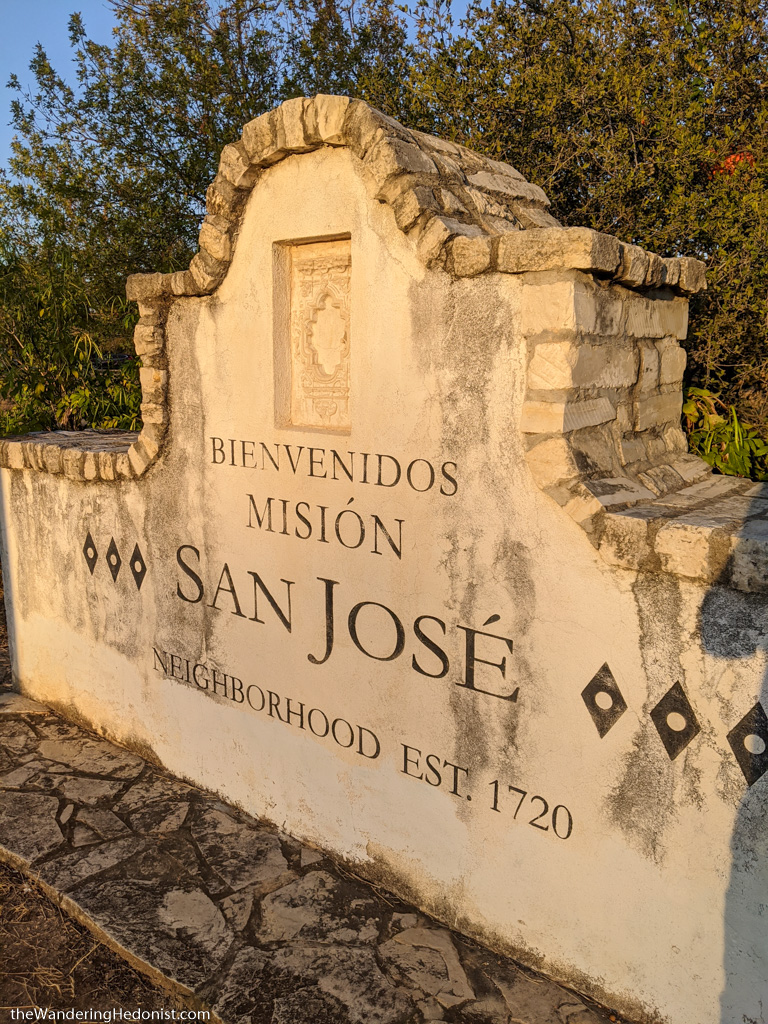











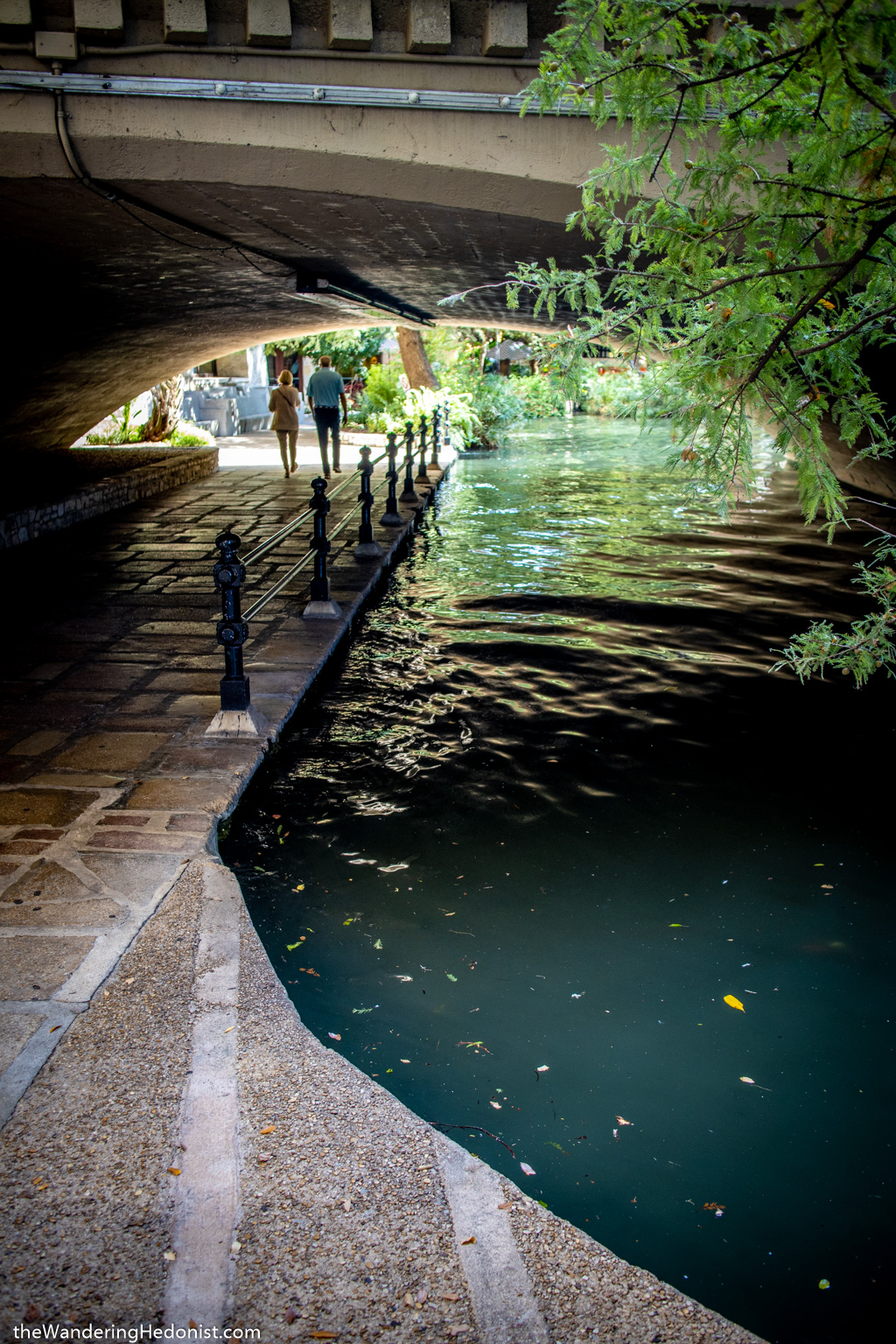


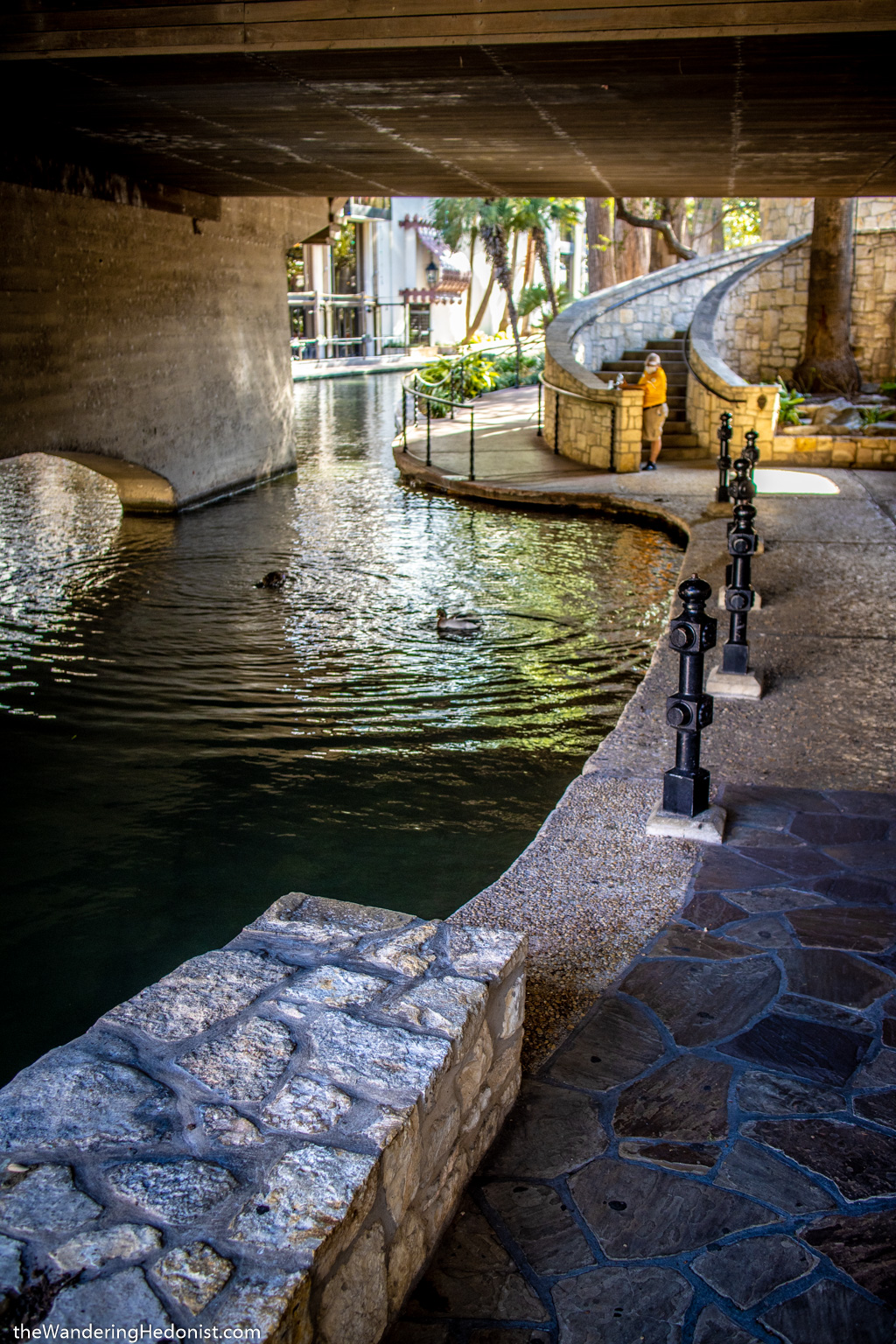
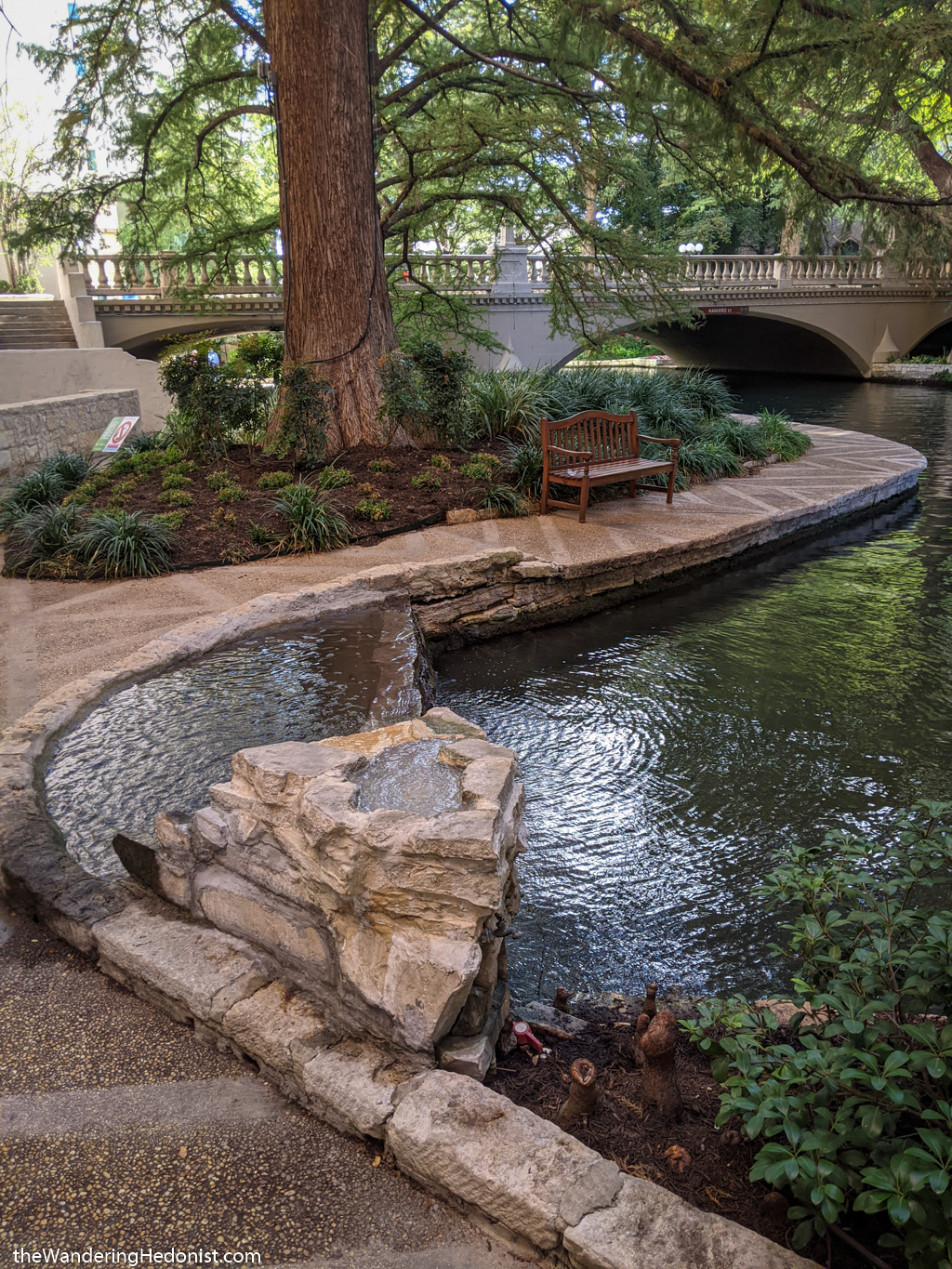





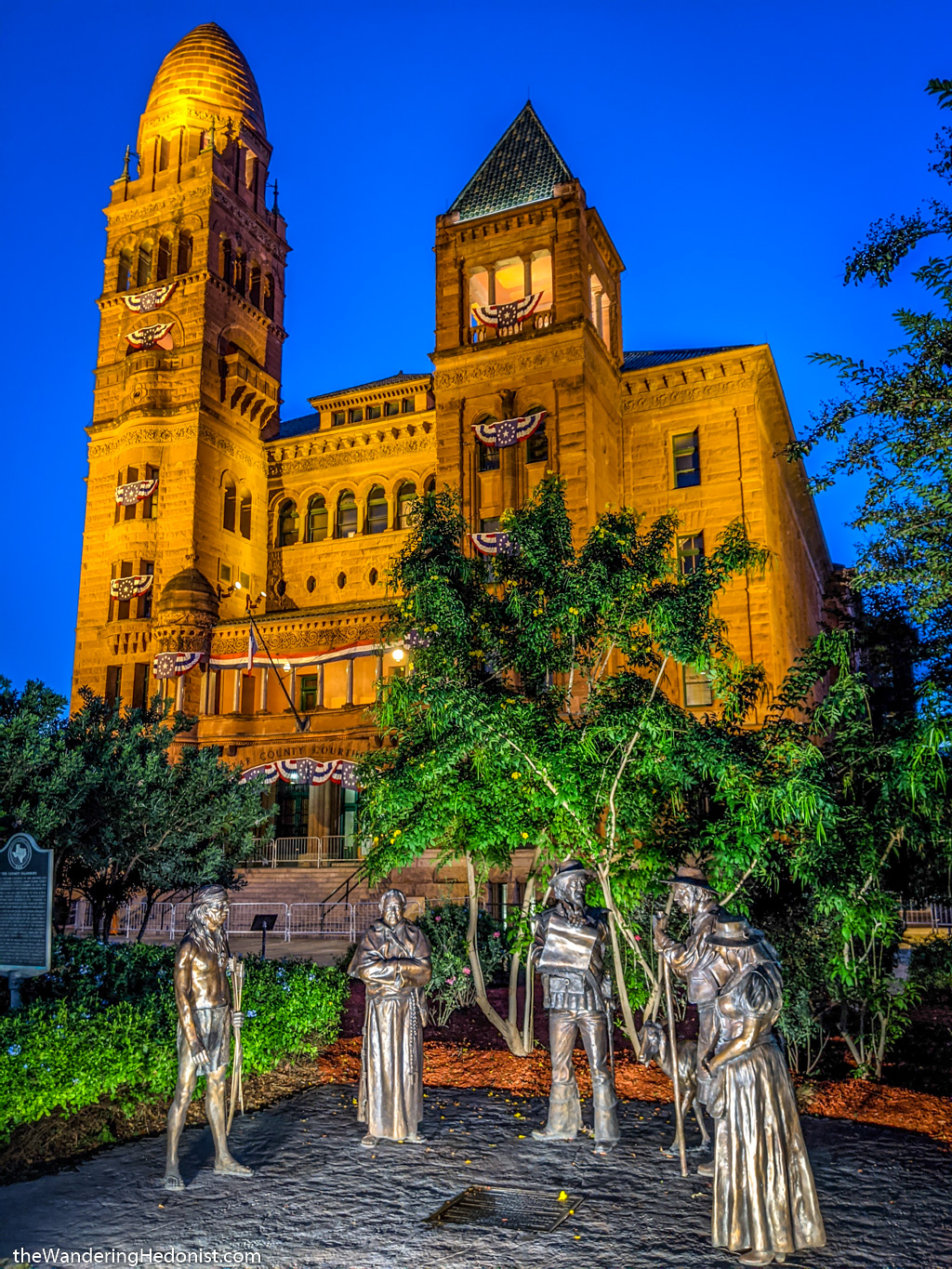

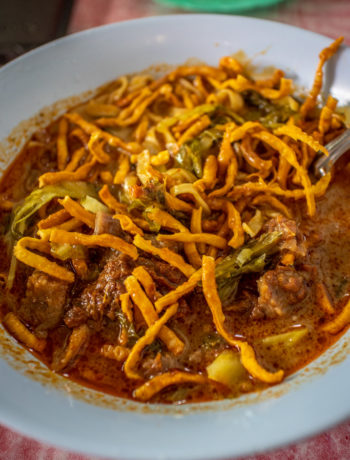
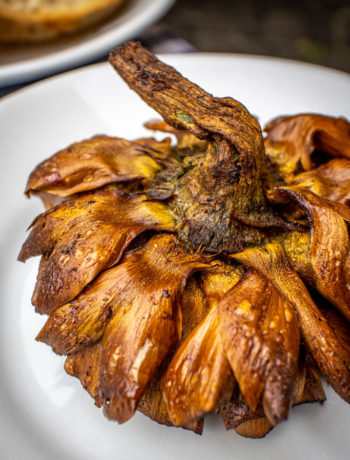

No Comments